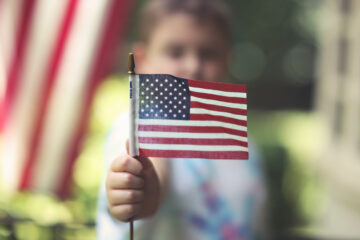This article is the last in a five-part series on how to show love to your child.
We are finishing our study of the five love languages taught by Gary Chapman and Ross Campbell in their bestselling book, The Five Love Languages of Children. We have covered words of affirmation, physical touch, quality time, and gifts. This month we end with the love language: acts of service.
If you have a child who asks you to cook a favorite meal, needs help with homework, or wants you to make a brown bag lunch for school, you might have a child whose love language is acts of service.
As we help our kids, we demonstrate loving service as a gift. However, this love language demands the parent’s most attention and energy. For that reason, we need to keep our emotional tanks full and replenish our energy through rest.
The first step in service is to do something for the child. Preschoolers cannot yet do laundry, but they can put dirty clothes in a laundry basket. You will need to model it in increments. Most likely, you will need to demonstrate it several times before they do it correctly. As the child ages, you might need to model every step of the laundry process:
- carrying the basket to the laundry room
- sorting laundry
- running a washer and dryer
- ironing
- folding and putting clothes away where they belong
When your child leaves for college, he will know not to mix the reds with the whites or dry a sweater but rather how to properly do laundry.
The main goal in service is for the child to grow into a mature adult who can love and serve others. You will want to find opportunities to help the less fortunate and underprivileged. Consider doing a service project together as a family or sending a teenager on a mission trip. These opportunities expose your kids to different experiences without all the benefits and comforts of home and discover the joy of helping others.
Hosting friends or neighbors in your home gives children a chance to love others who are different from them. As they serve, they will become more comfortable hosting and loving others. They will know how to engage others because you modeled it, and they experienced it.
What is your child’s love language? If you don’t know, ask them if they feel loved. Then ask why or why not. You will fill your child’s love tank when you know their primary love language. And when you fill their love tank, you will meet their deepest emotional needs.
Sally’s love language is physical touch. Her husband and kids fill her emotional tank through hugs. She and her husband enjoy an easy rhythm of life as empty nesters. You can follow her on Instagram at @sacressman or read more from her at www.sallycressman.com.














